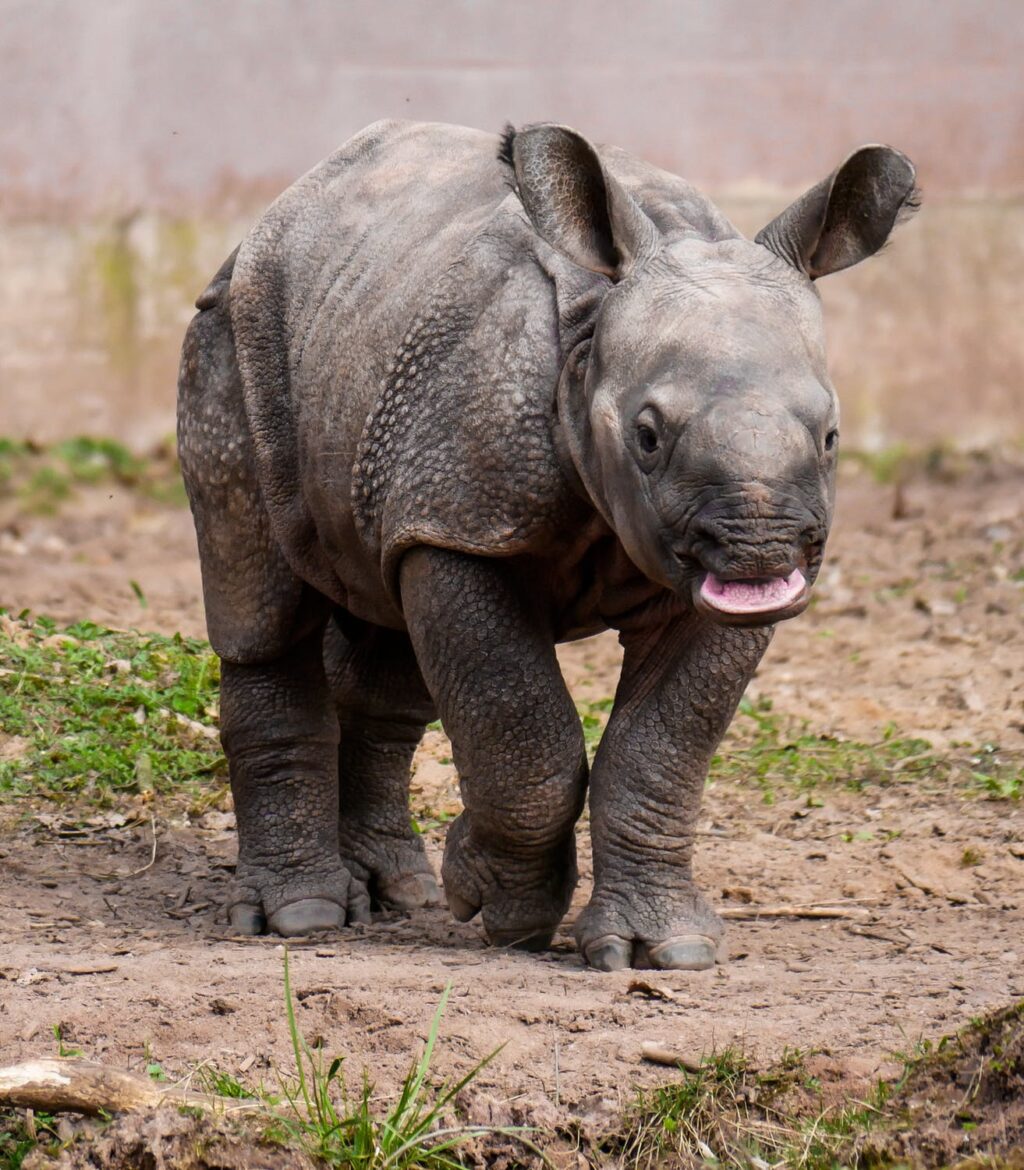Miami Zoo Welcomes The Birth Of Indian One-Horned Rhinoceros Through Artificial Insemination

By Neucrad Health May 8, 2019
In a rare and unprecedented event, Miami Zoo authorities welcomed the birth of a greater Indian one-horned rhinoceros on Tuesday 23rd April 2019 at 12:30 am through induced ovulation and artificial insemination. After fifteen months of gestation, a seven-year-old female rhinoceros, Akuti gave birth to the baby. There are less than 3500 one-horned rhinoceros left in the wild, so this birth is a rare and historical achievement. It is only the second time, Miami zoo staffers could record the birth of Indian rhinoceros in captivity. This is also the first successful birth by artificial insemination, so zoo vets have created history with this assisted reproductive process. Akuti was born on January 2012 and raised at San Diego Zoo Safari Park.
How is the baby doing after birth?
Both the mother and the baby are fine after birth. However, zoo staffers are yet to establish the gender of the baby. The zoo staff would conduct a health check on the baby after they feel it would be safe to separate the new-born from the overprotective mother. The initial moments are always critical especially for the first time mothers as there are instances where they fail to establish a bond with the baby. It is a good sign that Akuti is gelling well with her new-born.
Why is this assisted reproduction process a rare achievement?
The induced ovulation and artificial insemination is an unprecedented achievement for animals because Indian one-horned rhinoceros is a vulnerable species and fewer rhinos are present in natural habitat. They are also heavily poached by hunters. The eighteen-year-old father ‘Suru’ of the baby was born at the San Diego Zoo Safari Park. Before this artificial insemination, zoo staffers made several attempts for natural breeding of Akuti and Suru. However, they remain unsuccessful, and experts from the South East Zoo Alliance for Reproduction and Conservation (SEZARC) were called in for help.
The team along with Dr. Monica Stoops from the Cincinnati Zoo carried out the process of artificial insemination during January 2018. Rhino mothers give birth to a single baby after a long period of two to three years, so we can say SEZARC team had a marvellous achievement at the Miami Zoo with this birth. It would help to maintain a healthy population of this highly vulnerable species across the globe. SEZARC also carries out artificial insemination with other rare animals in various zoological parks and aquariums of the United States.
What is the speciality about Indian one-horned Rhinoceros?
The greater one-horned rhinoceros are currently listed as Vulnerable on the IUCN Red List. It means that this species would become endangered in future unless attempts are made to improve their population. They are the largest animal of the rhino family having the scientific name Rhinoceros unicornis. The animals grow up to a height of 5.75 feet to 6.5 feet and weigh between 4,000-6,000 pounds. The speciality of these animals is the presence of an 8.25 inches longhorn over their nose. You can see them in the north-eastern grasslands and flood plain of India and the Terai grasslands of Nepal.
Why are efforts being made to conserve Indian one-horned Rhinoceros?
Though Indian rhinoceros were widespread in the earlier days, during the 20th century, their population decreased alarmingly due to hunting for sports and killing as agricultural pests. There was a time when the number of these animals dropped to below 200, and they were on the verge of extinction. Strict policies by Wildlife authorities of India and Nepal has improved their number to around 3500 in the current days. However, poaching alert is still high, and forest guards of both countries keep a vigilant watch on their habitat every day.
So, this was, in brief, the story of artificial insemination of one-horned Indian rhinoceros and the efforts of improving its population.
Image: It is for illustration purpose only.





